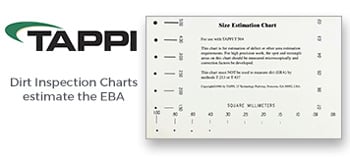Water vapor permeability of sheet materials at -18°C (0°F), Useful Method UM 573 (2015)

Please Note: This document will be available in PDF format in the "My Electronic Documents" link on the home page once your order has been completed. Please make sure you have the latest version of Acrobat Reader. Click on the Acrobat Reader icon to check for the latest version, it’s FREE. To print a hardcopy of a PDF file correctly you must have a postscript printer. If you are not sure if your printer is a postscript printer please refer to your owner’s manual.
Purchase of electronic (downloadable) documents made at www.tappi.org by credit cards, followed by instant download CANNOT be cancelled. We do not offer refunds on electronic download documents.
This method is for the determination of water vapor permeability of paper, paperboard, and flexible packaging materials under storage conditions at -18°C (0°F). It is generally suitable for sheet materials up to 125 μm (5 mils) thick. The method has been developed because of increased emphasis on frozen-food production, and because no existing procedure gives results which correlate with those at -18°C. [TAPPI T 448 “Water Vapor Transmission Rate of Sheet Materials at Standard Temperature and Humidity” is suitable at temperatures of 23°C (73°F) and 50% relative humidity, and TAPPI T 464 “Gravimetric Determination of Water Vapor Transmission Rate of Sheet Materials at High Temperature and Humidity” applies at 38°C (100°F) and 90% RH.].
In general, packaging materials used for storage at -18°C should be capable of protection against an appreciable loss of moisture for periods up to 1 or 2 years. The final selection of materials for such storage is probably best done by actual package storage tests for the full length of time required. This method is a simplified and rapid method which has been shown to give results indicative of behavior during long-term storage. Many of the packaging materials are based on cellulose, including paper, paperboard, cellophane, and glassine. The time required for these materials to reach moisture equilibrium when exposed at -18°C may be several weeks or months. The assumption is made in this procedure that equilibrium is reached, for practical purposes, in the 7-day initial conditioning period.





